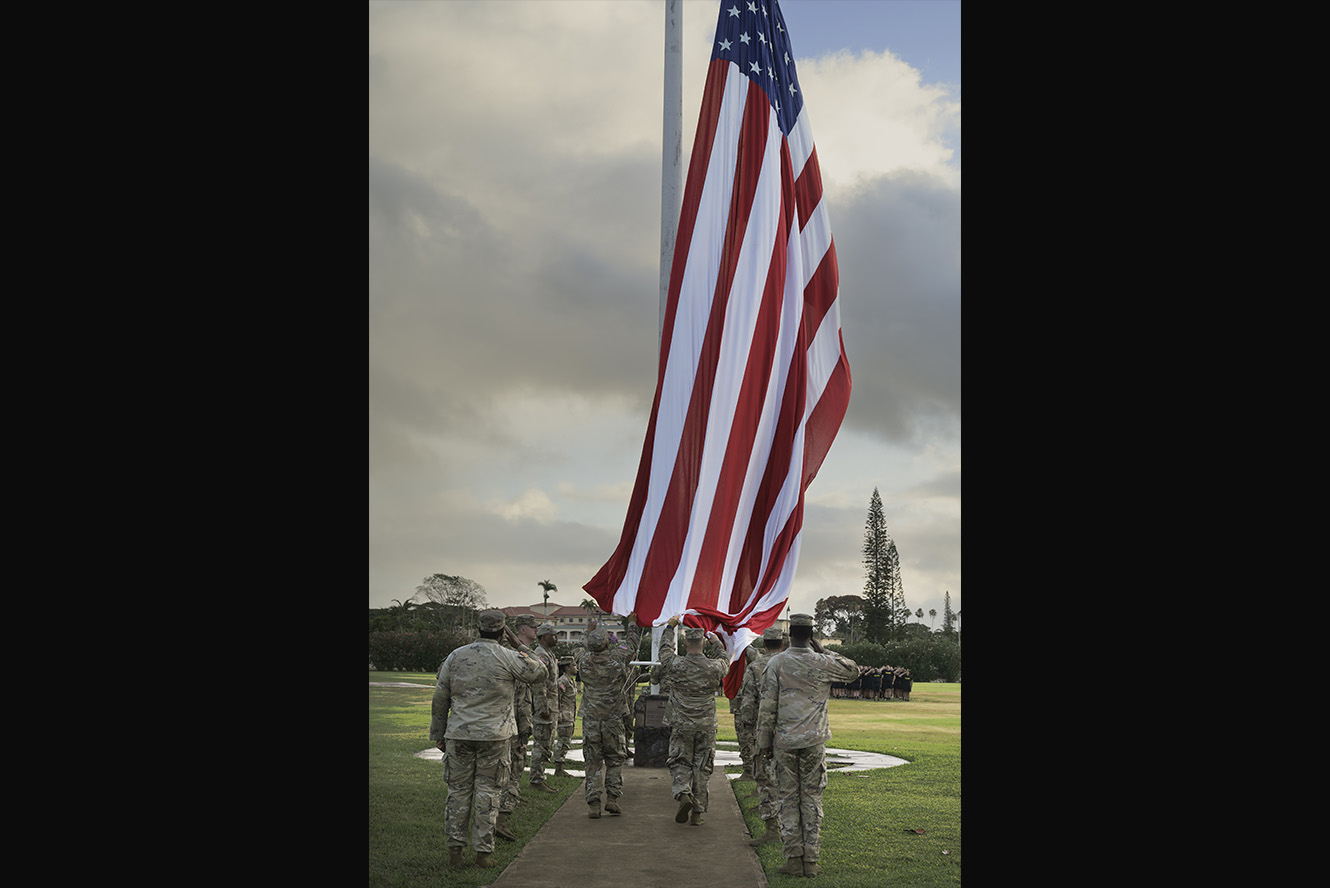Why Small Carriers Should Be Watching Government Freight Right Now
Government freight isn’t the secret shortcut social media makes it out to be—but for small fleets that are tired of chasing the spot market and ready to build something more stable, it’s a lane worth learning. Over the past year, more owner-operators and small-carriers have started asking how to bid on government loads, especially as […] The post Why Small Carriers Should Be Watching Government Freight Right Now appeared first on FreightWaves.

Government freight isn’t the secret shortcut social media makes it out to be—but for small fleets that are tired of chasing the spot market and ready to build something more stable, it’s a lane worth learning.
Over the past year, more owner-operators and small-carriers have started asking how to bid on government loads, especially as contract freight keeps shrinking and spot rates stay unpredictable. The truth is, government contracting—or GovCon, as it’s often called—isn’t a fast track. It’s a structured lane with strict rules, longer payout cycles, and big paperwork. But for those who understand the game, it can also mean steady lanes, longer contracts, and consistent revenue.
We recently broke this all down in a deep-dive session inside the Playbook Masterclass—but here’s what every small carrier needs to understand right now, whether you watched it live or not.
Why GovCon Freight Is Even on the Radar
Let’s start with what’s real.
There’s more freight out there than just what you’re seeing on DAT and Truckstop. From local school districts needing weekly milk deliveries to FEMA emergency contracts that need box trucks on standby, the government buys more transportation than any private shipper in the U.S.
And here’s what most carriers don’t realize: a large portion of that freight is set aside specifically for small businesses.
If you’re a carrier with:
- Fewer than 500 employees
- Less than $30 million in annual revenue
- Proper authority and registration
…you qualify to bid on many of these jobs. Some contracts are even reserved exclusively for small carriers or companies with certifications like Woman-Owned, Veteran-Owned, or Minority-Owned.
But qualification doesn’t mean readiness. Melanie Patterson, founder of Team Integrity Knowledge Center, a firm that assists small business owners with navigating the complexities of getting established as a government contractor said it best; “Too many small carriers think GovCon is out of reach. The government buys everything—and they’re required to buy from small businesses first. If you’re set up right, you’ve already got a shot.”

Real Talk About the Cons
Let’s be honest up front—GovCon is not for everybody. There are serious downsides that you need to be ready for:
1. Slow Pay
This isn’t the world of quick pays and factoring. Expect Net 30, 45, or even 60 on some federal contracts. That means you’ll need to float fuel, driver wages, insurance, and maintenance before that first check lands. If you’re already tight on cash flow, this can bury you.
2. Complex Registration
Getting set up in SAM.gov (the federal contractor registration system) isn’t a simple sign-up form. You’ll need your business structure in order, tax info, NAICS codes, and a banking setup ready to go.
And even when you’re registered, just being in SAM.gov doesn’t get you work. You still have to find the bids, respond with a clean package, and compete on pricing and capability.
3. Technical Billing
Government customers use systems like WAWF (Wide Area Workflow) or IPP for invoicing. You can’t just fire off a QuickBooks invoice. If your admin team—or your cousin managing the books—can’t handle this, you’re going to have serious delays.
Why It Still Matters
Despite all the red tape, government freight can be a game-changer for the right carrier with the right setup.
Take this scenario:
- You’re running one or two reefers.
- You’ve got a dependable driver.
- You know your cost per mile and have some admin support.
Now picture this:
A local USDA contract opens up to deliver temperature-controlled goods 3x per week to three counties. Total value? $180,000 over 10 months. No brokers. No bidding war. Just a clean response, a capability statement, and a pricing sheet.
This happens more often than you think. But the carriers that win are the ones who are organized, registered, and pay attention to what’s posted.

Three Entry Paths for Small Carriers
You don’t have to go all-in on federal contracts right away. Here are three ways small fleets are entering the GovCon space without overextending:
1. Start as a Subcontractor
Instead of going after the award yourself, link up with a prime contractor who already has it. They need reliable carriers to execute the work—and they handle the invoicing and compliance. You focus on delivering freight and building a relationship.
2. Look Local Before Federal
Local governments—school boards, counties, state agencies—also need transport. These jobs often pay faster and come with less complexity. Some can be found on your state’s procurement site, others are listed right on SAM.gov under “State/Local”.
3. Bid on “Low Bid” Work First
Every week, the government posts small, low-dollar, short-term contracts for basic freight. These jobs are a great way to get your feet wet, understand the paperwork, and start building past performance—without locking into something huge.
How to Price Right Without Underbidding
We’ve seen too many businesses win a government contract and lose money because they didn’t calculate real costs.
Here’s a basic formula you need to know before quoting anything:
- Start with your cost per mile.
- Add admin time and billing complexity.
- Include buffers for fuel and unexpected accessorials.
- Factor in time delay on payments.
If you quote like you’re on a load board, you’re going to sink. GovCon freight pays well—but only if you submit a complete, realistic rate that covers your full operation.
As Melanie shared in Masterclass: “You don’t win contracts by bidding the lowest. You win them by bidding clean, fair, and clearly.”

What You Need to Get Started
If you want to explore this lane, there are four things you need to get in order first:
- SAM.gov Registration – Get your Unique Entity ID (UEI), DUNS no longer used. Free to register.
- Capability Statement – A 1-page resume for your business. Lists your equipment, service area, and past performance.
- Pricing Template – Build a template that calculates your breakeven per load and gives you a buffer.
- Compliance Folder – Keep your COI, DOT/MC info, safety rating, driver roster, and endorsements in one place.
Optional (but powerful): Certifications like WOSB, MBE, DBE, or 8(a) can put you in front of set-aside contracts you won’t see otherwise.

The Real Opportunity
The freight market is full of noise right now. Everyone’s chasing the next hot load or hoping rates bounce back. But the carriers that will survive and scale in 2025 are the ones building systems and securing freight they can count on.
Government work isn’t for everyone—but for those who want out of the chaos and into something consistent, this is a lane worth learning.
And no—you don’t need a $2 million fleet or a full compliance department. You just need:
- A clean setup
- A smart plan
- A willingness to execute
This isn’t a shortcut. It’s a shift in strategy. But for those ready to shift, there’s real opportunity here.
If you want more help with the setup, the bidding, or understanding how to structure your backend to support this freight—our Masterclass covered all of that. You can catch the replay in the portal. But even if you never watch it, now you know what’s possible.
And for a small carrier, that knowledge could be your edge.
The post Why Small Carriers Should Be Watching Government Freight Right Now appeared first on FreightWaves.


















































































































































